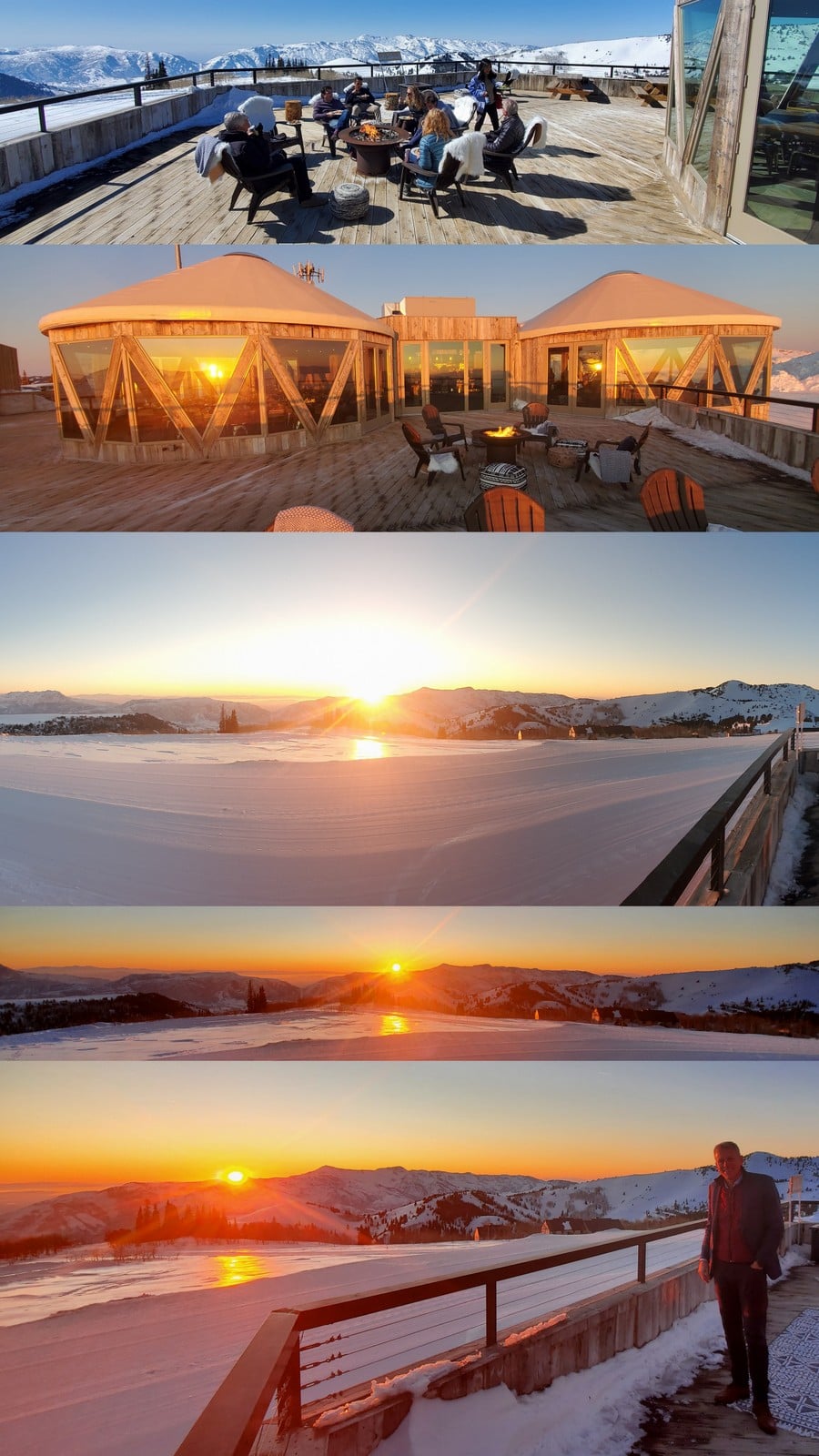Whitney Tilson’s email to investors discussing the recent volatility in the markets underscores why I don’t use stop-losses; Joel Litman suspends stop-losses; Powder Mountain, Grand Targhee, and Jackson Hole.
Q4 2019 hedge fund letters, conferences and more
Stop-Losses And The Volatility In The Markets
1) The recent volatility in the markets underscores why I think it's a mistake for investors to use stop-losses (note that my thoughts here do not apply to traders or to short selling).
Automatically selling a stock if it moves against you by a certain percent (or you lose a certain dollar amount) can mitigate risk by capping your losses and preventing you from turning a bad investment into a disastrous one. It's so easy to get caught up in a swirl of emotions, fail to see that you've made a mistake, dig in your heels, and not exit – or worse yet, continue adding to the position and thus magnify your losses. The hedge-fund industry is littered with the carcasses of guys – and, yes, they're all men – who made this mistake.
So I understand why some investors choose to use stop-losses...
Those who don't use them – like us here at the Empire Investment Report and Empire Stock Investor – need to be able to accurately assess the intrinsic value of the businesses whose stocks they own... carefully manage risk... and control their ego and emotions. (We believe that we do all three.)
It's true that stop-losses do protect you from huge losses... But they also subject you to the mercy of the markets.
It's like entering a NASCAR race with a car that can't go more than 65 miles per hour. While you're far less likely to crash, you're never going to win the race, either.
To quote Benjamin Graham – the father of value investing and Warren Buffett's teacher – it's critical that "Mr. Market is your servant, not your master." By definition, a stop loss is the opposite, forcing you to do something based on the market's actions.
Stocks can be extremely volatile – sometimes much more so than the underlying value of a business. As an investor, your challenge is to figure out when the market is making a mistake, and take advantage of it. The nature of stop-losses forces you to sell at what could be the precise time you should be buying more!
Sure, you'll avoid train wrecks... But you'll also miss moonshots like Netflix (NFLX). In late 2011, I started to buy shares after they fell from $43 to $11 (split-adjusted). Over the following year, the stock bounced around... finally bottoming in early October 2012 at $7.78 – down 27% from my original purchase price. If I had used a 20% or even a 25% stop loss, I would have sold near the bottom – right before the stock went up more than 50 times in less than six years.
Think about the underlying math... No matter how wrong you are about a stock, you can't lose more than your initial investment (assuming you don't buy more on the way down)... But your upside is infinite. (The inverse is true when shorting stocks, which is why we recommend using stop-losses when doing so.) You only need to find – and hold on to – a few of these moonshot stocks in an investment lifetime to make a fortune.
The odds that you're clever enough to buy one of these stocks right near the bottom is slim. Far more common is that you're too early, as I was years ago at my hedge fund when we bought beverage company SodaStream at $35 a share. We then watched it fall to $22, where we bought more... A painful year or so later, it bottomed around $12, where we bought even more. But then, over the next two years, it soared to nearly $100 before PepsiCo (PEP) acquired it for $144 a share in 2018.
We knew the company well. We correctly assessed that the problems that were plaguing it (and crushing the stock) were fixable. And because we didn't use a stop loss, we ended up making a fortune on it.
Keep in mind that stop-losses aren't the only way to manage risk. In the case of SodaStream, we never forgot that this was a small, Israeli-based company with a volatile stock, so we only made it a 3% position. And each time we bought it on the way down, we did so cautiously. The decline in the stock price had shrunk the position size to around 2%, and we only bought it back up to a 3% to 4% position. Similarly, when the stock started to skyrocket, we regularly trimmed it to keep the position size under 5%. In this way, no matter what happened, this one position wasn't going to dictate the returns of our entire portfolio.
In summary, if you're not going to use stop-losses, you need to manage risk in other ways – namely by controlling your ego and emotions... analyzing companies accurately... and managing your portfolio wisely, appropriately diversifying and using proper position sizing.
These factors separate the winners from the losers on Wall Street. They're difficult to do well, as they're all judgment calls rooted in rationality, conservatism, and good information and analysis.
If you're able to do these things, then you don't need to use stop-losses... and you can make Mr. Market your servant, not your master.
Joel Litman Suspends Stop-Loss Policy
2) Another approach is to use stop-losses selectively, when declines are due to company-specific issues rather than general market sell-offs. For example, I think my friend and colleague Joel Litman of Altimetry was exactly right to suspend his High Alpha newsletter's stop-loss policy last Friday. Here's what he wrote...
The goal of our stop-losses is to protect our readers from major moves in individual businesses because of company-specific issues.
The goal of those stops isn't to take our readers out of all the strong fundamental ideas we've identified because of a market move, unless our other macro work says that move is warranted.
As we've said over the past few days – especially in Wednesday's Altimetry Daily Authority – the underlying fundamental data for the market are still positive.
While the market is selling off in a panic, savvy investors should be using the action as a buying opportunity instead of selling off great companies indiscriminately.
As such, we're suspending our hard stops on the positions in our model portfolio until this unwarranted market volatility ends.
If something specific happens with one of our names that makes us concerned about a company thesis, we'll notify our readers immediately. You'll get a message just as you did previously for positions hitting their stop-losses.
We're doing incremental back-testing to understand how we can better adjust our stop-losses in a market pullback like this.
To be clear, it's important to stay disciplined and have an exit plan in place...
We'll be testing options such as market-relative stops, beta-adjusted stops, or a trigger on suspending or moving down stops during overall volatility. When we have better data, we'll be sure to update you on any changes to our stop-loss strategy.
Powder Mountain, Grand Targhee, and Jackson Hole
3) On my way home from the Apple (AAPL) annual meeting last week (which I covered in last Thursday's e-mail), I stopped in Salt Lake City for 24 hours to attend a board meeting of Bridge International Academies. The group is doing amazing things – educating 1 million children in Nigeria, Kenya, Uganda, Liberia, and India.
The meeting was in the Skylodge at the summit of Powder Mountain – a wonderful, mostly undiscovered ski area an hour north of Salt Lake City. Here's a recent New York Times article about it (Utah Powder and Steeps, Without the Crowds) and here are some of my pictures...
It kills me that I didn't have even a day to ski PowMow last week, but I'm making up for it this weekend and next week. Yesterday, I flew from Tampa to Jackson, Wyoming and drove over the pass into Idaho to ski with some buddies today, tomorrow, and Sunday at Grand Targhee – another undiscovered gem. Then, on Sunday evening, I'm driving back over the pass to ski all next week with my middle daughter at Jackson Hole – my absolute favorite ski area in the world!
Best regards,
Whitney







